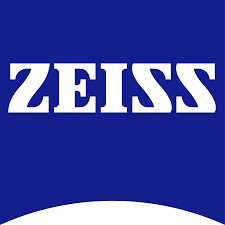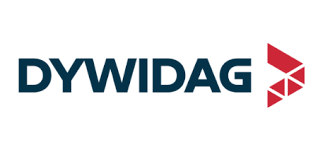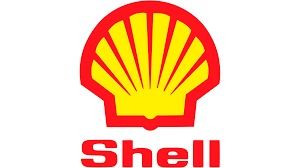Naval Combat Systems Market Report
Published Date: March 16, 2024 | Report Code: naval-combat-systems
Naval Combat Systems Market Size, Share, Industry Trends and Forecast to 2033
This report provides a comprehensive analysis of the Naval Combat Systems market, projecting insights from 2023 to 2033. It covers market size, growth rates, industry trends, segmentations by technology, platform, and application, as well as regional insights and key players in the industry.
| Metric | Value |
|---|---|
| Study Period | 2023 - 2033 |
| 2023 Market Size | $35.00 Billion |
| CAGR (2023-2033) | 5.8% |
| 2033 Market Size | $62.34 Billion |
| Top Companies | Lockheed Martin Corporation, BAE Systems plc, Northrop Grumman Corporation, Raytheon Technologies |
| Last Modified Date | 02 June 2025 |
Naval Combat Systems Market Report (2023 - 2033)
Naval Combat Systems Market Overview
Customize Naval Combat Systems Market Report market research report
- ✔ Get in-depth analysis of Naval Combat Systems market size, growth, and forecasts.
- ✔ Understand Naval Combat Systems's regional dynamics and industry-specific trends.
- ✔ Identify potential applications, end-user demand, and growth segments in Naval Combat Systems
What is the Market Size & CAGR of Naval Combat Systems market in 2023 and 2033?
Naval Combat Systems Industry Analysis
Naval Combat Systems Market Segmentation and Scope
Tell us your focus area and get a customized research report.
Naval Combat Systems Market Analysis Report by Region
Europe Naval Combat Systems Market Report:
Europe's Naval Combat Systems market size stood at $10.02 billion in 2023, anticipated to increase to $17.85 billion by 2033. Strengthened defense initiatives and collaborations among Western nations aiming for naval superiority and strategic deterrence are driving factors.Asia Pacific Naval Combat Systems Market Report:
In the Asia Pacific region, the Naval Combat Systems market was valued at approximately $6.50 billion in 2023, expected to grow to about $11.58 billion by 2033, stimulated by Japan, India, China, and Australia enhancing their naval capabilities amid regional tensions. Strategic alliances and defense modernization programs significantly boost market prospects.North America Naval Combat Systems Market Report:
The North American market, estimated at approximately $13.42 billion in 2023, is forecasted to expand to $23.90 billion by 2033. The U.S. Navy's modernization efforts and increasing allocations in defense budgets significantly influence this growth, emphasizing advanced naval combat systems.South America Naval Combat Systems Market Report:
The South American market for Naval Combat Systems, valued at around $3.41 billion in 2023, is projected to reach $6.07 billion by 2033. Countries like Brazil and Chile are focusing on improving their naval assets, primarily driven by increasing maritime security concerns.Middle East & Africa Naval Combat Systems Market Report:
Finally, the Middle East and Africa region's market, valued at $1.65 billion in 2023, is projected to grow to $2.94 billion by 2033, as countries like Saudi Arabia and the UAE enhance their maritime security amidst geopolitical uncertainties.Tell us your focus area and get a customized research report.
Naval Combat Systems Market Analysis By Platform
Global Naval Combat Systems Market, By Platform Market Analysis (2024 - 2033)
The analysis of the Naval Combat Systems market by platform presents a dynamic overview of the five major categories: Surface Vessels, Submarines, and Aircraft Carriers. Surface vessels are leading the market with a share of 65.75% in 2023, growing from about $23.01 billion in 2023 to approximately $40.99 billion by 2033. Submarines represent another significant segment, expected to grow from $9.31 billion in 2023 to $16.58 billion by 2033, maintaining a market share of 26.6%. Meanwhile, Aircraft Carriers, currently at $2.68 billion, will reach $4.77 billion by 2033.
Naval Combat Systems Market Analysis By Technology
Global Naval Combat Systems Market, By Technology Market Analysis (2024 - 2033)
The technological segmentation highlights two significant categories: Hardware and Software. Hardware systems dominate the market, with growth from $23.01 billion to $40.99 billion by 2033, maintaining a substantial share of 65.75%. Software systems, currently valued at $9.31 billion, are slated to grow to $16.58 billion, accounting for 26.6% of the market. The increasing integration of sophisticated software solutions enhances operational effectiveness in combat scenarios.
Naval Combat Systems Market Analysis By Application
Global Naval Combat Systems Market, By Application Market Analysis (2024 - 2033)
The application perspective reveals pivotal segments: Defense, Surveillance, Mine Warfare, and Electronic Warfare. The Defense sector exhibits the largest presence, growing from $23.01 billion in 2023 to $40.99 billion by 2033, representing 65.75% of the market share. Surveillance applications, anticipated to rise from $9.31 billion to $16.58 billion (26.6% share), emphasize intelligence and reconnaissance roles, while Mine Warfare remains critical, expected to grow from $2.68 billion to $4.77 billion by 2033, holding a 7.65% share.
Naval Combat Systems Market Analysis By Component
Global Naval Combat Systems Market, By Component Market Analysis (2024 - 2033)
Components of naval combat systems can be categorized into hardware, software, and services. Hardware solutions dominate the market at $23.01 billion for a 65.75% share in 2023, forecast to grow to $40.99 billion by 2033. Software components are expected to see substantial growth from $9.31 billion to $16.58 billion, while services comprising maintenance and operations will expand from $2.68 billion to $4.77 billion.
Naval Combat Systems Market Trends and Future Forecast
Tell us your focus area and get a customized research report.
Global Market Leaders and Top Companies in Naval Combat Systems Industry
Lockheed Martin Corporation:
A key player in providing advanced naval combat systems and solutions, specializing in integrated platforms and technologies for naval systems defense.BAE Systems plc:
Renowned for its land, sea, and air defense systems, offering innovative solutions worldwide, contributing significantly to the naval defense sector.Northrop Grumman Corporation:
Leading in aerospace and defense technologies, providing critical systems and services that enhance naval operations and combat capabilities.Raytheon Technologies:
A global leader in defense and aerospace systems, delivering advanced naval combat systems technologies for enhanced maritime security.We're grateful to work with incredible clients.









Related Industries
FAQs
What is the market size of naval Combat Systems?
The naval combat systems market is valued at approximately $35 billion in 2023 and is projected to grow at a CAGR of 5.8% through 2033, indicating a robust demand for advanced maritime defense technologies.
What are the key market players or companies in this naval Combat Systems industry?
Key players in the naval combat systems industry include major defense contractors like Lockheed Martin, Northrop Grumman, BAE Systems, General Dynamics, and Thales Group, who drive innovation and development in naval technologies.
What are the primary factors driving the growth in the naval Combat Systems industry?
The growth in the naval combat systems industry is primarily driven by increasing military spending, geopolitical tensions, advancements in technology, and the need for enhanced naval capabilities to ensure national security.
Which region is the fastest Growing in the naval Combat Systems?
North America is the fastest-growing region in the naval combat systems market, projected to grow from $13.42 billion in 2023 to $23.90 billion by 2033, driven by significant defense budgets and modernization initiatives.
Does Consainsights provide customized market report data for the naval Combat Systems industry?
Yes, Consainsights offers customized market report data tailored to the specific needs of clients in the naval combat systems industry, allowing for targeted insights into particular segments and regions.
What deliverables can I expect from this naval Combat Systems market research project?
From the naval combat systems market research project, you can expect comprehensive reports, market forecasts, segment analysis, competitive landscapes, and actionable insights tailored to strategic planning.
What are the market trends of naval Combat Systems?
Current market trends in naval combat systems include an increasing focus on cyber warfare, integration of artificial intelligence, multi-domain operations, and the modernization of fleets, reflecting evolving defense requirements.
